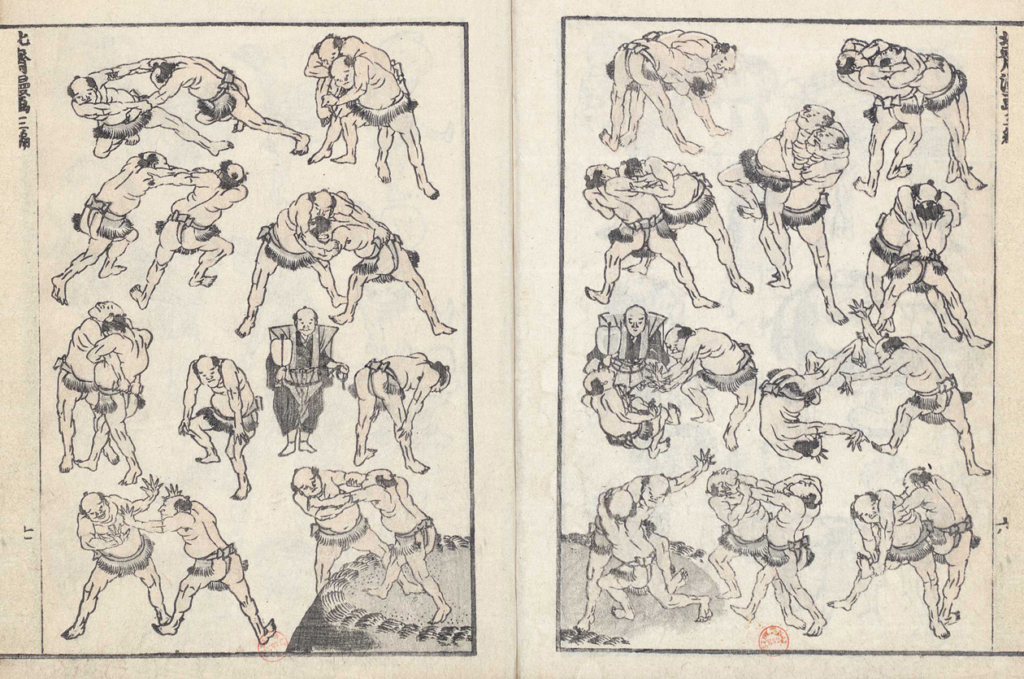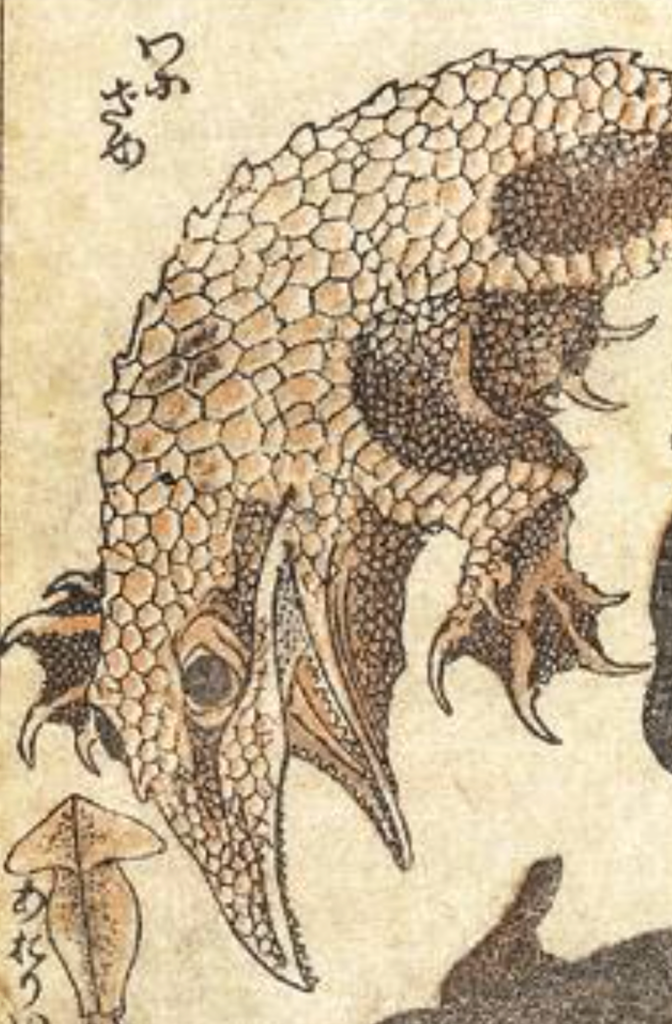
Exploring Hokusai’s Aquatic Artistry in Hokusai Manga
Have you ever heard of the Hokusai Manga?
Hokusai Manga is an illustrated manuscript by Katsushika Hokusai, the artist of the 36 Views of Mount Fuji. It is also known overseas as “Hokusai sketch.

Various things have been depicted, ranging from historical figures to animals to specters, including, of course, fish. Let’s take a look at what fish were actually depicted.

Realism and Imagination: Hokusai’s Fish Illustrations
Looking from the top right to the side, you can see that there are fish that can be found in the seas around Tokyo (Edo at that time): kinryu, haze, dabohaze, medaka, funa, tenagaebi, doshiyau, hae, zakohebi, tanago, and kaizu (child of black sea bream). The same is true for the left side.
The left side of the chart is similarly lined up with familiar fish such as “Fuefukidai (which has the image of a fish from the south, but was also caught in the Miura area),” “Shimadai,” “Takanoha,” “Kochi,” “Mutsu,” “Anko,” “Hirame,” “Bora” and “Tachi no Uo (swordfish).
Although they include some deformation, they are all quite realistic. Even the stripes on the hawksbill snapper are well drawn. Some of the sketches may have been made while looking at the actual fish procured in town.
However, you will be a bit surprised when you turn to this next page.
Encountering the Extraordinary: Hokusai’s Sea Monsters

What is this monster!
Let’s calm down and look at them in order from the top right. The small one is “Konoshiro (konoshiro). This is what the kohada, an Edo-style sushi fish, is called when it grows up. The black one below it is “sakamata,” or killer whale. It has some kind of abdominal fins (*), a stump behind the tail fin, and scary eyes…
Furthermore, the one in the middle is a shark. If I had to say so, it looks like a Rabuka… but it doesn’t have such scales and the fins on its back are too rugged.


The black one below it is “Kushira (whale). It is certainly recognizable, but like the killer whale, it looks somewhat strange….
In between these are “sardines,” “conger eels,” and “squid,” all of which are realistic and easy to recognize. To the left of them, the most prominent one is the Wanizame.
According to the dictionary, crocodile shark is “a common name for sharks. In the San’in region, it is the name for a large shark, also known simply as a crocodile.
Why did Hokusai depict these imaginary fish (+mammals) next to his familiar and realistic fish paintings? Whales, killer whales, and sharks must have been caught in the seas around Edo, so if he wanted to see them, he could have painted realistically while looking at the actual fish. Why did he paint it this way? How did he draw this?
Contrasts in Edo Period Fish Illustrations: Hokusai & Jakuchu
While I was thinking about this, I came across an essay titled “The Mystery of Jakuchu’s ‘Group of Fish'” written by Professor Nakabo of Kyoto University (an ichthyologist who is also famous for rediscovering kunimasu through his relationship with Sakana-kun). https://www.kahaku.go.jp/research/researcher/my_research/download/s-gento/sakanasuki.pdf

Jakuchu’s fish paintings are very realistic, but the catsharks, red hammerhead sharks, and sea turtles that appear in these paintings are fish that should not have been seen in Nishiki-koji, Kyoto, where he is believed to have made reference to. They were seen in Kishu, a place close to Kyoto, but Jakuchu’s footprints in Kishu are not known.
Hokusai did not paint fish that he could have seen directly and painted realistically, and Jakuchu painted fish that he could not have seen directly and painted realistically. The mystery of these Edo painters who painted fish only deepens.
(The Hokusai images were cited from this page)